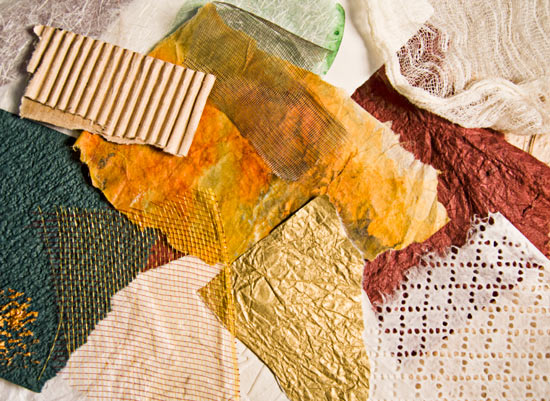
Collage and decoupage are both paper crafts involving cutting and gluing. They both take images, photos and materials from one source and turn them into something completely different. However, they are not one and the same. Collage is considered a formal art, while decoupage is considered a craft.
Collage has been around for hundreds, if not thousands, of years, with some believing its earliest forms were found in 200 B.C. China. The art form was not always referred to as collage, in fact coinage of the term is attributed to Pablo Picasso in the early 20th century. The word collage comes from the French word coller, which means to glue. The fine art community agrees that collage as an art form began in the early 20th century as part of modernism. A mixed-media or photo collage is a work of art, meant to be framed and admired.
Decoupage, on the other hand, comes from the French word decouper, which means to cut out. In this craft, a surface is covered with glued paper cut-outs. In the 18th century both Italian and French craftspeople adopted the decoupage technique in order to emulate Japanese lacquered objects. Decoupage is a finishing technique, meant to decorate an object.
Due to its decorative nature, the decoupage crafter must take extra steps to protect the surface once the decorations have been applied and glued. Typically a varnish or similar substance is applied over the images to make the surface more durable.
For those interested in trying their hand at making collage or decoupage a good starter supply kit is important. Some necessities include: mounting boards (for collage), spray adhesive, very sharp, small scissors, a hobby knife, a cutting mat, a metal ruler, clear acrylic spray, water based varnish and foam brushes, rubber cement or Mod Podge, and masking tape. Having all these things on hand makes it easy to jump right in.
The true fun in both activities is finding images to cut-out and use. Many artists and craftspeople take a very serious approach to finding and composing their creations; but even so, a certain amount of playfulness must be present to give the finished project the distinctive spontaneous air associated with both art forms.
There are many great sources out there for images. Some include: sheet music, art prints, magazines, catalogs, wallpaper, gift wrap, postcards, and published paper or digital collage or decoupage motifs. Your imagination is the limit. Many people like to set aside a special collection” box, which can be an acid-free photo box, in which to store images and cut-outs until ready to use. Sometimes the search for images itself becomes a wonderful hunt for treasure that is practically a hobby in itself.
1 Comment
Thanks for sharing some of the techniques, I really appreciate it:D